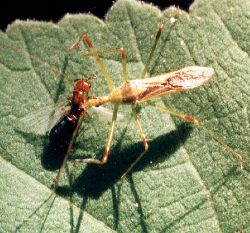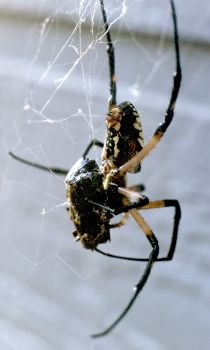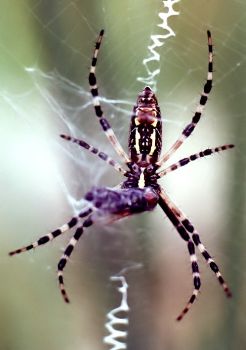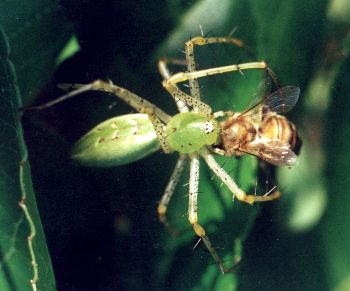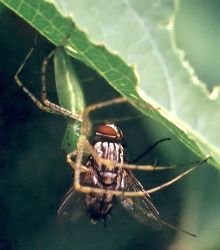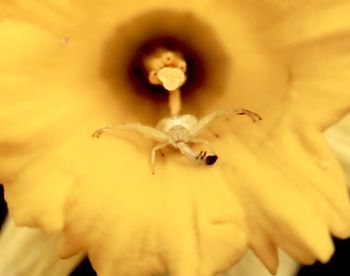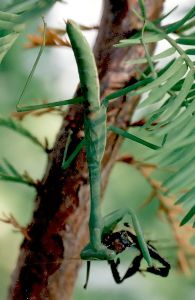Predators and Prey
by Valerie (June 9, 2000)
revised August 24, 2003
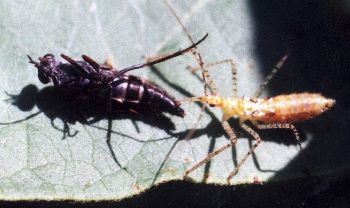
While it's nice to see beautiful flowers and lush foliage in a garden, I find the dramas played out by the fauna to be much more absorbing. Every animal in the garden is either eating the plants, eating another animal, being eaten, or cleaning up the ecosystem by eating whatever is left over. Every so often I get the chance to see predators attack or eat their prey, and, even more infrequently, I get to photograph it.
One of the most conspicuous predators is the spider. Sometimes we have the large argiope female spiders (Argiope aurantia), along with their tiny male suitors, in our yard. They are also known by other names such as garden spider, writing spider, or banana spider. Because they build a web, once they decide on a place to stay we can be sure of finding them in that vicinity all summer. The spider in the photo at left made her web by our front door, right over the doorbell. For a couple of months, everybody who came to the door knocked. She is feasting on a grasshopper. The spider at right has caught a fly. Both are females, but the one at left is mature while the other is only about half grown. As the spiders increase in size, so does their capability for large prey. Small spiders have flimsier webs and so they tend to break when a large insect hits them. Large spiders can produce a web so strong that it can hold small birds, even though the spiders are too small to take advantage of such a feast.
The green lynx spiders (Peucetia viridans) here in Texas are a very large species, with females reaching a length of about an inch. They actively hunt, but seem to have preferred territories, often around flowers. Their brilliant green color makes them hard to see in dense foliage and they easily ambush prey, here a fly and a honeybee. They are also secure enough in their camouflage that they don't try to hide when they are approached, making them one of my favorite photographic subjects.
The biggest insect predator we have is the praying mantis (Stagmomantis sp.), which live all over our yard. In this photo, the mantis is finishing off a meal of a yucca plant bug, a large dark brown insect that is quite common in our gardens. There are two kinds of praying mantises that live in our yard: a brown, small type in which the females have no wings, and a larger, longer bright green species with obvious wings. The mantis shown here is a young specimen and hasn't developed its wings yet. It seems that most predators that lie in ambush do so upsidedown. All the spiders in their webs commonly orient that way and most of the praying mantises that I've seen have their heads down. Perhaps it is easier to grasp heavy prey while hanging, than to hold it up the other way, or an attack from above is more effective with flying insects. |
